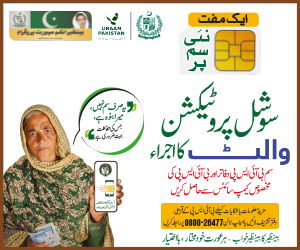Caught Between Screens and Reality: The Story of a Generation
By: Syeda Farhat Sakeena Bukhari
Not so long ago, life moved to a different beat. The sun was the clock, and people’s days were full of hands-on work — cooking meals from scratch, washing clothes by hand, and running households that required time, effort, and care. Women, especially, spent hours in the kitchen or tending to chores that weren’t just tasks, but the very rhythm of daily life.
Looking back, the writer sees a world where life was slower, more physical, and oddly fulfilling. It wasn’t easy — but it was real. There was a quiet satisfaction in tired muscles and the comforting smells of home-cooked meals filling the air.
Then came technology, sweeping in like a whirlwind and turning hours into minutes. Washing machines now hum quietly where once hands scrubbed. Microwaves zap dinners in seconds. Smartphones deliver everything from groceries to news, instantly. Life became easier — and the modern generation eagerly embraced the change.
But as the writer observes, with all this speed and ease, something subtle and important has quietly slipped away.
The Upside: Life Made Easier
There’s no denying that technology has been a game-changer. It has shrunk the world, connecting people across continents in real time. Mothers juggling careers and home life can now prepare dinner faster and check work emails between sips of coffee.
Students in remote areas can access lessons once only available in elite classrooms. Workplaces have gone virtual, letting employees join meetings from the comfort of their homes rather than from cramped cubicles.
Technology feels like a faithful friend — always ready to help, always one step ahead. It saves time, energy, and often, sanity. For many, it has opened doors to opportunity and broadened horizons.
The writer notes that these advancements have lifted the weight of domestic chores off many shoulders — particularly women, who have historically borne the brunt of household labor. Tasks that once consumed entire afternoons — washing clothes, preparing meals — can now be done in a fraction of the time. This freedom has allowed many to pursue education, careers, and passions that were once out of reach.
The Hidden Cost: When Convenience Comes at a Price
But there’s a flip side — one that becomes clear in the quiet moments. The very conveniences meant to help us have, in some ways, made life too easy.
Where feet once pounded pavement on errands and children played outside until dusk, now bodies often stay still — parked in chairs, eyes locked on screens.
Physical activity has been traded for screen time, and the consequences are real: rising rates of obesity, back pain, anxiety, and other health issues. Children who once raced through fields now race through video games. The outdoors, once a playground and sanctuary, has become a backdrop for selfies and social media stories.
Sleep has also become a casualty — glowing screens and endless scrolling steal precious hours of rest, leaving many feeling wired and weary.
There’s growing concern that this generation is “sitting itself into trouble,” trading physical movement for digital distractions. The writer observes that the body, once treated like a temple through daily movement and labor, now often feels like a neglected passenger.
The Quiet Disconnect: When Being ‘Connected’ Feels Lonely
Ironically, in this hyper-connected world, many feel more isolated than ever. Texts replace talks. Emojis replace emotions. Family dinners sometimes resemble silent gatherings, each person absorbed in a separate digital world.
There’s a strange loneliness in being surrounded by people yet feeling unseen. This “alone together” paradox seems to define modern life — constantly connected, but not really connecting.
Social skills, once sharpened through face-to-face conversation and shared experiences, are fading. Body language, tone, and emotional nuance often get lost behind the cold glow of a screen. The writer fears that meaningful conversation is becoming a lost art, sacrificed for speed and convenience.
Finding the Middle Ground: Can Technology and Humanity Coexist?
The good news? Technology isn’t the villain. It’s just a tool — and how we use it makes all the difference.
The writer believes that balance is key. Setting boundaries around screen time, making space for fresh air, and choosing real conversations over quick messages can help restore what’s been lost. Small steps — putting phones away during meals or taking evening walks without headphones — can reintroduce moments of presence.
Communities and workplaces also have a role to play. They can encourage healthier habits, foster genuine connections, and create room for human interaction.
Schools, too, must go beyond teaching digital skills. They need to include emotional intelligence, responsible technology use, and the value of unplugging in their curriculum.
A Generation Poised Between Two Worlds
This generation stands at a unique crossroads — between a past where life was tangible and present, and a future that is wired and fast-paced. They feel the pull of both worlds and must find their own path forward.
There is hope in that tension. Technology can be a bridge — one that connects, empowers, and inspires — if people remember to occasionally step away from their screens and step into life.
Small Steps Toward Big Change
Sometimes, the smallest changes create the biggest impact. The writer shares stories of families introducing “phone-free dinners,” rediscovering laughter and connection at the table. Neighborhoods organizing “digital detox” days to reconnect with nature and each other. Employers offering flexible hours to promote mental wellness. Schools scheduling “screen-free” periods to spark creativity and real play.
These small ripples can help a generation that feels swept away by technology to find their footing again.
Closing Thoughts: Technology as a Partner, Not a Master
In the end, technology is neither hero nor villain. It is a powerful force that has transformed daily life in profound ways. It has brought ease, knowledge, and global connection — but also new challenges and complexities.
The choice lies with each of us: to let technology lead us blindly, or to take control and use it wisely, thoughtfully, and humanely.
The writer hopes for a future where technology serves as a partner — helping us live fuller, healthier, and more connected lives, without losing touch with what makes life truly meaningful: presence, care, and genuine human connection.
And sometimes, that means putting the phone down, stepping outside, and simply… being human.






Comments are closed, but trackbacks and pingbacks are open.